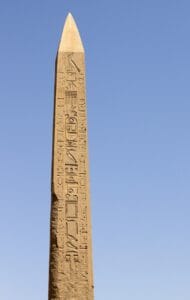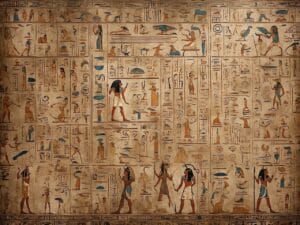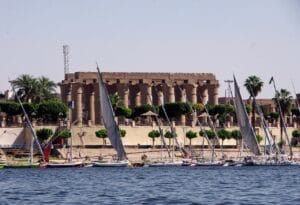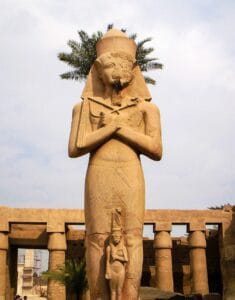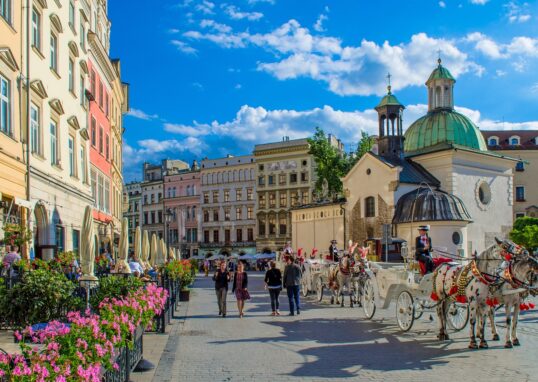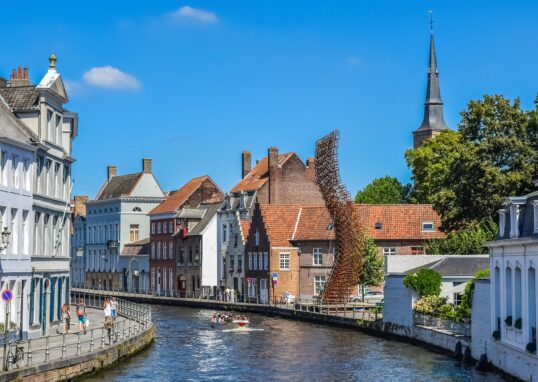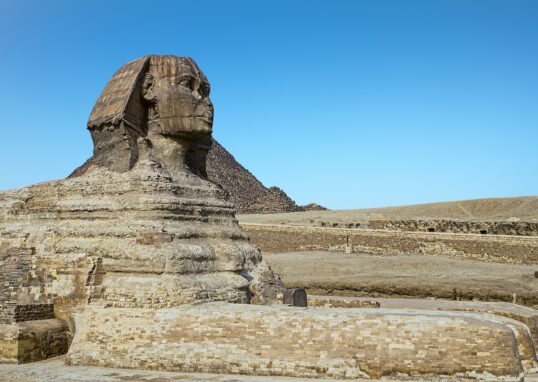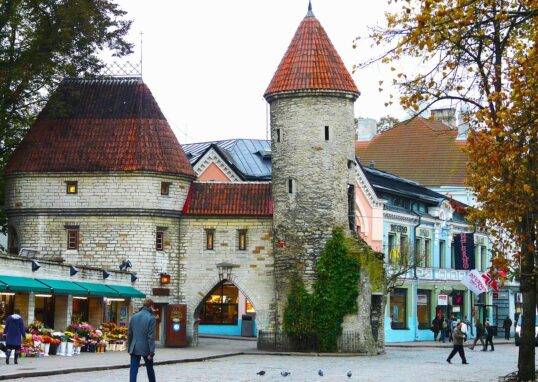
Ancient Thebes with Its Necropolis: A Journey into the Land of Pharaohs
The old city of Thebes is one of the most famous ancient Egyptian cities. It was the splendid capital of Egypt in the height of Egyptian glory. The city took up the Nile banks, in present-day Luxor. Thebes is temples and statues alone no more; it is history, culture, religion, and art. When UNESCO listed Ancient Thebes with its Necropolis as World Heritage in 1979, it was no surprise at all. The city is replete with riches. It is here that you have the Temple of Karnak, the Temple of Luxor, the Valley of the Kings, and the Valley of the Queens. These are sites where kings, queens, and gods are spoken about. Here, we will talk about Thebes in complete detail. We will study its temples, its tombs, and its surroundings. We will also see how it affected Egyptian life, religion, and art. And finally, we will study the contemporary environment in which tourists can now visit.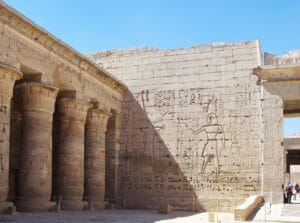
Daily Life in Ancient Thebes
Thebes was not reserved for pharaohs. It was home to ordinary people as well. Farmers grew crops on the fertile Nile banks. Artisans built temples and adorned tombs. Priests performed rituals in the temples. The Deir el-Medina village sheltered the workers who built the tombs in the Valley of the Kings. These archaeologists have discovered writings, tools, and homes there that document the everyday life of these people.
Karnak Temple: The Heart of Thebes
Karnak Temple is the largest temple complex in Egypt. It is also one of the greatest religious centers in the world throughout history. The chief deity that was worshipped in Karnak was Amun-Ra, the god king. Pharaohs varied in building and expanding Karnak over many centuries. The pharaohs left their legacy in some new aspect: a temple, a courtyard, or a pylon. Walking at Karnak is walking through time. The Great Hypostyle Hall is the most popular section. It boasts 134 colossal columns. Some of them are 23 meters tall. The enormity and intricacy of this hall leave visitors amazed. Karnak also had sacred statues, obelisks, and lakes. Pharaohs like Hatshepsut and Ramses II donated obelisks that still stand today. God statues during the Opet Festival transferred from Karnak to Luxor Temple, reflecting on the strong relationship between the two complexes.
Luxor Temple: The Temple of Kingship
Luxor Temple is situated about 3 kilometers south of Karnak. It was built mostly by Amenhotep III and later developed by Ramses II. This temple was not dedicated to a specific god. Instead, it was connected with the principle of kingship. Pharaohs came here during coronation rituals. It was a temple to commemorate the relation between kings and deities. Two huge statues of Ramses II stood guard at the entrance. Now there is only one. There were two gigantic obelisks too. One of them now stands in the Place de la Concorde in Paris. The other still stands in Luxor.
The Valley of the Kings: Tombs of the Pharaohs
West of the Nile River is the Valley of the Kings. This is a highly famous graveyard. Pharaohs of the New Kingdom wanted to hide their tombs from grave robbers. So instead of building pyramids, they excavated tombs deep into rock. More than 60 tombs have been discovered here. All tombs are unique. Some are small and others are enormous with plenty of rooms. The walls have rich paintings depicting gods, symbols, and scenes of the afterlife. The most famous tomb is that of Tutankhamun. It was almost intact when Howard Carter discovered it in 1922. There were golden treasures, chariots, jewels, and the famous golden mask within. The discovery astounded the world and made the Valley of the Kings legendary.
The Valley of the Queens: Eternal Homes of Royal Women
It is near the Valley of the Kings that the Valley of the Queens is found. It is where the queens, princesses, and princes were interred. There are more than 90 tombs there. The most famous is the tomb of Queen Nefertari, the wife of Ramses II. Her tomb is considered the most beautiful in Egypt. The paintings are so bright and detailed that they look fresh even today. Scenes show Nefertari with gods, walking into the afterlife with grace and beauty. The Valley of the Queens tells us that women also held a very important role in ancient Egypt. Their tombs were built as carefully as kings.
Temple of Hatshepsut: The Queen’s Masterpiece
The mortuary temple of Hatshepsut at Deir el-Bahari is one of the loveliest buildings of Thebes. It towers over a cliff, blending nature and art. Hatshepsut, one of the few female pharaohs of Egypt, built this temple to glorify herself and the god Amun. The temple is made up of three terraces joined by ramps. There are reliefs and statues on each level. The walls tell Hatshepsut’s life and her divine birth. One of the most popular scenes is her voyage to Punt, a land with gold, ivory, and incense.
The Ramesseum: The Temple of Ramses the Great
The Ramesseum is the temple of death of Ramses II. It was built on the west bank of the Nile. Although partially destroyed today, it remains informative about the magnitude of Ramses. The temple also had massive statues, tall pylons, and large courtyards. Its most famous statue was a seated colossal statue of Ramses II. Fragments of it now lie shattered on the ground, but even in destruction, it testifies to the size and majesty of the king. The walls of Ramesseum are lined with scenes of Ramses’ wars. Most famous is the Battle of Kadesh, which Ramses won against the Hittites.
Medinet Habu: The Temple of Ramses III
Another great temple on the west bank is Medinet Habu. This was the mortuary temple of Ramses III, one of the last great pharaohs of Egypt. The temple is large and well-preserved. It has massive walls that once served as both a temple and a fortress. The reliefs on the walls show Ramses III defeating the Sea Peoples, who invaded Egypt. Medinet Habu also had storerooms, workshops, and priestly dwellings. It was almost a small city in Thebes. Today, it gives us a good idea of how temples functioned in day-to-day life.
Colossi of Memnon: Guardians of Thebes
Two enormous statues are positioned on the west bank, facing the Nile. They are known as the Colossi of Memnon. They were part of a huge temple that had been built by Amenhotep III. The temple itself no longer exists, but the statues remain. Each of the statues stands 18 meters tall. For centuries, travelers chronicled them. During the ancient times, one of the statues emitted a peculiar sound at daybreak. The people thought that the statue was singing. This made the Colossi famous across the Greek and Roman worlds.
Tombs of the Nobles and Artisans
Thebes was not only for queens and kings. Nobles, officials, and laborers also visited here to be buried. Scenes of daily life are shown in the Tombs of the Nobles: fishing, agriculture, and parties. They give us an idea about the common Egyptian life. Near the village of Deir el-Medina lives the laborers who worked to build the royal tombs. Their tombs are also lavishly decorated. This shows that even workers had pride and art.
Surrounding Attractions of Ancient Thebes (Luxor)
A visit to Ancient Thebes is not just a tour of temples and tombs. There are lots of other places to see in the contemporary city of Luxor and its surroundings. These places give the tourists a wider view about Egyptian history, society, and daily life. Let us describe these surrounding attractions in detail.
Luxor Museum
One of the first sights to behold after going through the ancient ruins is the Luxor Museum. It’s situated on the Nile and gives a peaceful setting.
- The museum isn’t large, but it’s well laid out. There are statues, jewelry, pottery, and tools of Thebes. All the items are presented with clear lighting and labels.
One of the most renowned exhibitions is the statue of Amenhotep III. Another showcase is the collection of Tutankhamun’s tomb, such as weapons, jewelry, and furniture. Unlike Cairo Museum, which is massive and full of people, Luxor Museum seems peaceful. People can stroll slowly and appreciate the beauty of each artifact. It is a must-visit for people who desire to relate the temples to the objects placed in daily activities.
Mummification Museum
Another point of interest nearby is the Mummification Museum. It explains how bodies were mummified by the ancient Egyptians.
- You can see the tools used for mummification. There are jars that were utilized to store organs, called canopic jars. There are even mummified animals such as cats, fish, and crocodiles.
The museum shows that mummification was not only done for kings. Priests, nobles, and even animals that belonged to gods were mummified as well. This museum gives a very clear picture of the Egyptian concept of the afterlife. It shows how carefully preparations had been made for immortality.
Deir el-Medina – The Village of Workers
Close to the Valley of the Kings is Deir el-Medina. This was the home of the workers who built the royal tombs.
- The village has remains of tiny houses. There are tombs of the workers, which are decorated. Inscriptions and papyrus notes on pottery have been found here.
These inscriptions show the daily life of the workers. They wrote about money, food, family, and even complaints. This makes Deir el-Medina very special. It gives us the voice of ordinary people, not just pharaohs.
Colossi of Memnon
Two giant statues along the west bank of the Nile are referred to as the Colossi of Memnon.
- They stand almost 18 meters high. They were built for Pharaoh Amenhotep III. These statues stood originally at the gateway to his mortuary temple, which has largely disappeared.
Previous to this, one of the statues made an odd sound at sunrise. People such as the Greek historian Strabo wrote it down. They thought it was the sound of Memnon, who was a hero of the Trojan War. That is how the statues got their name.
Hot Air Balloon Rides
For a spiritual experience, travelers mainly opt for a hot air balloon tour over Luxor.
- Flights usually start at dawn. You have a view of the Nile, temples, and valleys from within the balloon. Golden light gives desert and monuments a golden glow.
This is a memory-making experience. It gives visitors a bird’s eye view of Thebes as birds would have seen it. It also shows how the city was nestled among green Nile fields and desert.
Nile Cruises
Another way of viewing the area is by a Nile cruise. Luxor tends to be the departure or destination place for cruises to Aswan.
- The cruise boats are moving hotels. They stop at temples such as Edfu, which is owned by the god Horus, and Kom Ombo, owned by Sobek and Horus. Passengers dine, are entertained, and enjoy river scenery.
The cruise illustrates the importance of the Nile in Egyptian culture. The river was Egypt’s main highway for thousands of years. Nowadays, tourists have the opportunity to travel along the same road traveled thousands of years ago.
Luxor Souks and Markets
Following temple and museum tours, Luxor markets are a different experience altogether.
- The markets are crowded with sounds and colors. You can buy spices, clothing, perfumes, and souvenirs. Conventional Egyptian goods like papyrus paintings, alabaster statues, and hand-made jewelry are in demand.
Walking through the souk offers a chance to meet local residents as well. Bargaining is a way of life, and it’s even fun. The bazaars give an idea of Egyptian life beyond the ancient ruins.
Banana Island
Tourists can escape to Banana Island for some tranquility. It is a small island on the Nile, and it’s accessed by boat.
- The island is draped with banana plantations. Visitors can walk through, snack on fresh bananas, and enjoy the green surroundings. It’s a refreshing break from all the touring.
Families and children especially enjoy the serene ambiance. The island also shows the farm existence along the Nile.
Ramesseum
Ramesseum is the temple of Ramses II where he was buried. Though much destroyed, it is massive nonetheless.
- It had a giant statue of Ramses II in the past. The walls feature scenes of battles, including the well-known Battle of Kadesh. The temple also featured storerooms and priest houses.
The Ramesseum gained fame in recent times due to the poem Ozymandias by Percy Bysshe Shelley. The poem described the fallen statue as a metaphor for the transience of power.
Hotels and Tourist Facilities
Luxor is a tourist city, so it has lots of hotels. There are luxury resorts along the Nile, and budget guesthouses. Some of the top hotels are:
- Winter Palace Hotel: An old hotel where Howard Carter made the announcement of the discovery of Tutankhamun’s tomb.
- Hilton Luxor Resort & Spa: Luxury with Nile views.
- Budget Guesthouses: On the west bank, nearer to the tombs.
Restaurants serve Egyptian as well as foreign food. All of them have views of the Nile, so dining there is a treat.
Conclusion
Ancient Thebes with Necropolis is more than a UNESCO World Heritage Site. It’s living history museum. It displays the grandeur of ancient Egypt and the beliefs of its people. From the magnificent temples of Karnak and Luxor to the ornate tombs in the Valley of the Kings, there is a tale in every turn. The surrounding sites and modern Luxor enhance the enjoyment of the trip. Thebes is not an exercise in seeing ruins. It is an experience of feeling the presence of a culture that shaped human history.

